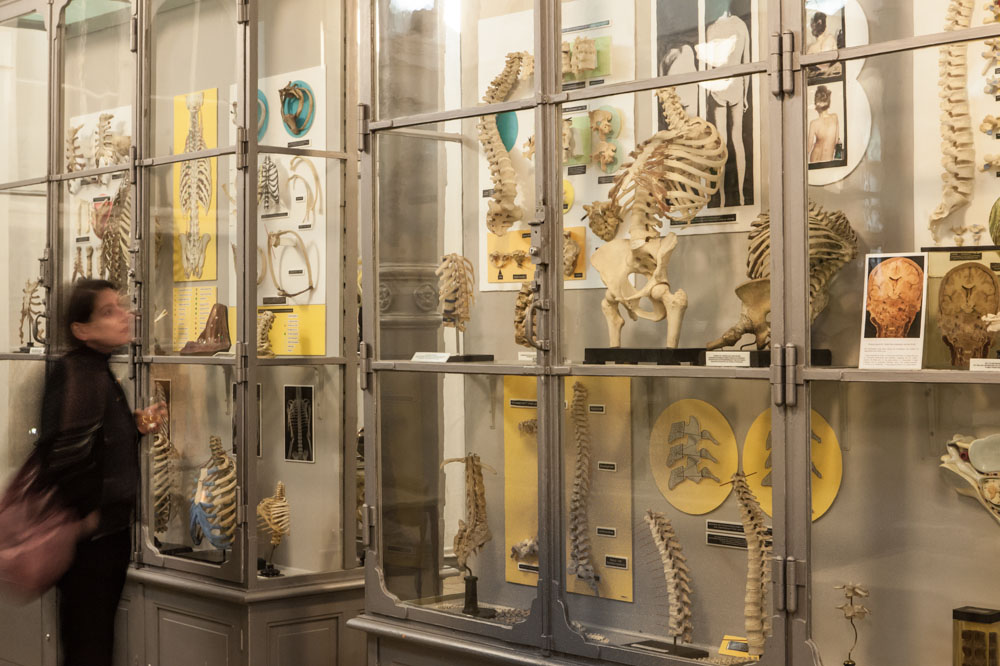There is no one body, only bodies: my body, your body, their body, our bodies. Bodies in public, in the waiting room, voting booth, lecture theater, operating theater; bodies (people) at war, bodies (people) crossing the waters to Europe, bodies (people) in jail, in protest, in love. Resilient and fragile, increasingly manipulable and prosthetic, but still full of epistemic black holes. An ideal of wholeness, a gaping lack.
Alone, the word “body” is a vessel that supposes physical presence, but one waiting to be filled with relative expectations, functions, and signifiers. Embodied, we move through the world, not just as a mind but also as a physiological self, which is always and inevitably interpreted by others according to the characteristics of skin color, gender, and appearance. Each interaction is an entanglement of thought and corpse – but what if your body experiences or exhibits not being enough?
Kader Attia’s film Réfléchir La Mémoire / Reflecting Memory (2016) had its German premiere at the event Body, as part of the series Dictionary of Now, in the fitting setting of the Institute of Anatomy of the Charité hospital in Berlin. The film takes the “phantom limb” phenomenon as its organizing principle. Phantom limb is the sensation that an amputated body part is still attached, often experienced as pain, the cause of which is thought to be the nervous system becoming confused by a loss of sensory input. A signal from the nerve endings associated with the now absent body part triggers the sensation, although in fact physically it is “false.” It is easier to imagine the body as circuits of information than to imagine how these circuits go wrong.
This move from the solo subject to the “mythical, figural body” of society, via medical analogy, situates the film within Attia’s broader research into the concept of repair, which works both literally and figuratively; a dynamic “process that binds two situations,” past and present, self and other. Attia points at the dual meaning of réparer in French, which includes both the mechanistic act of trying to fix something – as in to repair in English or reparieren in German – and the moral aspect of recompensing, as per reparations. Through interviews with surgeons, psychoanalysts, and cultural theorists and producers, the film links individual experiences of amputation, and its subsequent psychological effects, with the missing parts of (post)colonial collective memory.
Associations are traced between the gestures of surgery – repetitive, refined movements – and the sequences of a ballet dancer, who describes observing himself in the mirror behind the barre to fully perceive his body’s positions. A music producer explains how the music genre dub evolved out of reggae: with fragments of the full track removed, the dub B-side is a reverberating skeleton, the space around the rhythm sometimes summoning “phantom tones.” A psychologist outlines how the stages of personal grief are comparable to those of mourning communities; for example after genocide, haunted by the absence of the people lost. The common thread: something serious is missing, and that hurts – so how does one make sense of, or make amends for the pain?

The interviewees’ responses (we don’t hear Attia’s questions or see him in frame) are interspersed with silent shots of still bodies – kneeling to pray in church, dwarfed by a memorial, sat in a café before a round of bread cut in half – which provide the pauses necessary to process the words just spoken. Toward the end of the film, some of the participants, DJ and ballet dancer included, are shown to be amputees. Mirrors have been used to give the impression of the lost but still-felt limb. This actual therapy for phantom pain, explained in one of the interviews, allows people to remember their “whole” body again. At this moment of revelation, the viewer is made to confront their expectations of what an able body is. The idea seeded is that it’s harder to resolve what cannot, in conditions of enforced or involuntary amnesia, be recalled or represented.
While metaphor may hold up a mirror to the structures of the present, it can also construct the logic of illusion. In light of Françoise Vergès’ follow-up discussion, taking into account the complexity of colonial history, the analogy of the phantom limb seems a little too neat. It is not a single body part that has been severed but a cartographic assemblage of places ravaged and bodies mutilated. Further, as one audience member raised, metaphors of the body when applied to society can devolve agency and responsibility, and bring back unwanted echoes of the idea of a whole social body, rooted in the ideologies of the early 20th century. Attia recognizes well, though, how the visibility of past wounds, the stitch marks of repair, act as a continued memorial to the trauma behind them.
The active work of repair now, urges Vergès, must take into account not only the wrongs of Europe’s history, but those of Europe’s present. The work of repair begins with first understanding, she continues, that a sugar cube is not only sweet, but also covered in blood – blood that continues to seep from the violence of exploitation. To understand that some wounds are too deep to ever heal, and some continue to be re-opened by current political events. Art rooted in decolonial thinking, like Attia’s, can begin to pick apart “normative power” and the Eurocentric “myth of the perfect”. Then, the real work must happen between bodies (people) on the street, in institutions, at home, in everyday acts of support and solidarity, if there is to be any sense – or sensation – of reparation.
